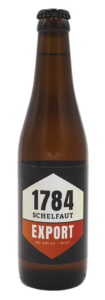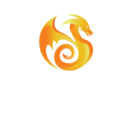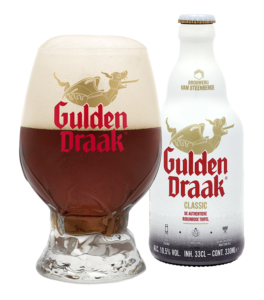
With its Gulden Draak, the Van Steenberge Brewery has brewed a beer that is as robust as the symbol of the dragon itself. It is a specialty beer with a fiery colour and unparalleled flavour and aroma. Gulden Draak has devoted fans throughout the world.
A unique, Belgian craft beer that is without equal: a strong, dark tripel with secondary fermentation in the bottle. The wine yeast used for the secondary fermentation contributes to the beer’s unparalleled flavour.
Visit the Gulden Draak website: www.guldendraak.be and taste the beer behind the legend!
The Van Steenberge brewery created Piraat in 1988 in the wake of the success of its Gulden Draak. Jozef Van Steenberge used the same unique wine yeasts as in Gulden Draak to create a unique, excellent amber beer.
The result is a very drinkable, but strong beer worthy of the name Piraat. Its power takes you on a journey through some unique flavours based on the brewery’s rich traditions. A living beer with a rich past. Set sail!
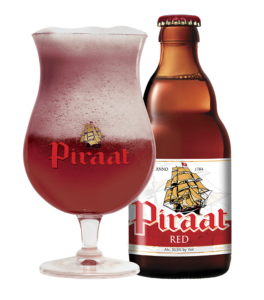
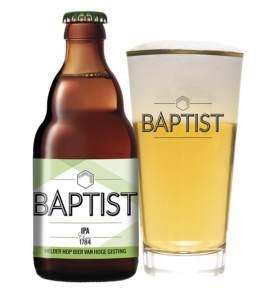
1784 was the year when Jan Baptist De Bruyne laid the brewing foundations of Van Steenberge. There is no better tribute to the brewery’s founder than our Baptist beers.
Jan Baptist’s brewing was an extension of his own agricultural operations. Back when cooling techniques were almost non-existent, beer brewing was a winter activity. By brewing his old brown, Jan Baptist unwittingly laid the foundations of the Van Steenberge brewery’s current extensive operations. Back in the day, the beer was distributed to the brewery’s own pubs, an practice that still lives on today.
Baptist is a flavoursome tribute to our founder and is brewed on the occasion of the opening of our own Bar Baptist. The result is an accessible craft beer with a full and rich flavour. Beers brewed with modern techniques and with respect for our rich history. A recipe that Jan Baptist would rightly be proud of.
The Augustinian monks have been brewing Augustijn since 1295 at their monastery in Ghent. In the Middle Ages, many priests and monks brewed and marketed their own beer. As the water was often contaminated, it was safer to drink beer because the water was boiled during the brewing process.
When the Augustinians started looking for a new brewing partner in 1987, Jozef Van Steenberge had already been experimenting a lot with top fermenting beers. Jozef won the competition organised by the Augustinians. This meant that the brewery gained access to the recipe of this historic monastery beer and the expertise of recipe administrator Janus Jeremanus. Janus was a consultant for the Van Steenberge Brewery for more than 25 years and introduced the original Augustinian yeast strains that we still use today.
Visionary Jozef Van Steenberge guaranteed the continued existence of the brewery in 1982 with the relaunch of Augustijn with secondary fermentation in the bottle. Jozef Van Steenberge was able to distinguish himself from the other pilsner brewers of that time thanks to the innovative character of the Augustijn beer.
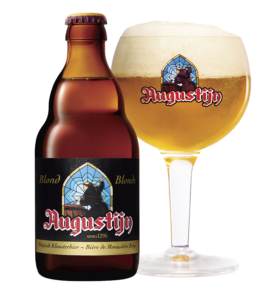
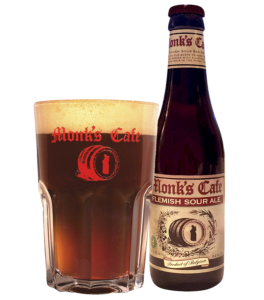
When Jan Baptist De Bruyne expanded his agricultural activities to include beer brewing in 1784, the Van Steenberge brewery was born. The first beer Jan Baptist developed was an old brown stored in oak casks and distributed to local, private pubs. The brewery was named ‘De Peer’ because of the beers’ typical fruity aroma. Later, the next logical step was the evolution to pilsner under the influence of the ‘lager beers’ during the two world wars. However, the Van Steenberge brewery’s true excellence lies in its craft beers over the past few decades.
To honour our rich history, we went back to our brewery’s origins and developed Monk’s Café, a fresh and mildly acidic old brown.
Under Paul Van Steenberge the brewery was called Bios, the Greek word for ‘life’ and a direct reference to the brewery’s own yeasts, which it carefully protects. As a microbiologist, son Jozef Van Steenberge was fascinated by the development of yeasts and created ‘Bios Vlaams Bourgogne’.
‘Bios Vlaams Bourgogne’ was renamed ‘Monk’s Café’ to refers to the brewery’s origins: a Flemish old brown made according to the traditional rules of the art of beer brewing for the beer lovers of today.
Bornem living abbey beer is inextricably linked to the Sint-Bernardus abbey in Bornem. It has carried the Recognized Belgian Abbey Beer label since 1999.
The Van Steenberge brewery has brewed the abbey beer since 1971 with great respect for the abbey’s rich history and traditions.
The label’s typical heron with a fish in its mouth is a common bird in the region surrounding Bornem. Many pubs and restaurants in the area have ‘reiger’ in their name, which is the Dutch word for heron. It is how we honour the roots of this rich abbey beer.
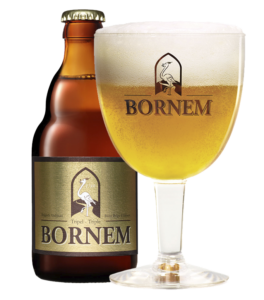
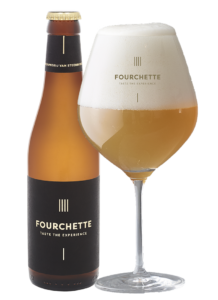
Fourchette is a living beer made from precious hop varieties and unique strains of yeast. In combination with the high-fermentation and secondary-fermentation processes, we create a velvety balance between soft bitterness and enjoyable refreshment. The mixture of a floral beer with a tripel produces a flavour that continues to evolve for a long time.
Fourchette is delicious with all kinds of food. That is the conclusion of scientists who studied our beer for ‘food pairing’ .
Top chefs can compose innovative dishes based on a scientific analysis of its aromas. The result? Fourchette tastes both fruity (peach, tropical fruit, pineapple and cooked apple) as well as floral (a touch of honey).
With the 1784 Schelfaut Export, Brewery Van Steenberge goes back to a Meetjeslandse tradition: a light lager in a 33 cl bottle.
1784 refers to the year the brewery was founded. Schelfaut stands as a tribute to Marie Schelfaut, the 3rd generation of the Ertveldse family brewers, who managed to preserve the brewery’s independence in 1919 and which it still is today!
